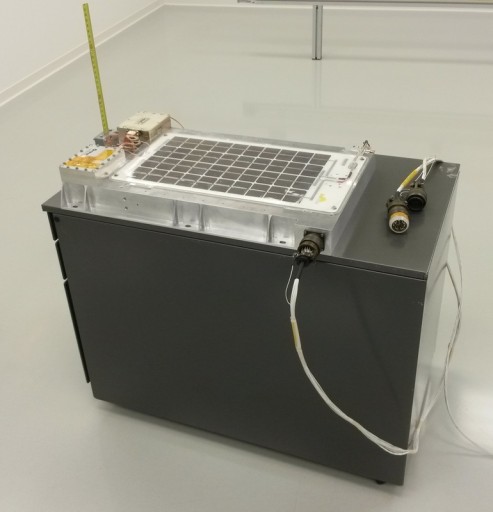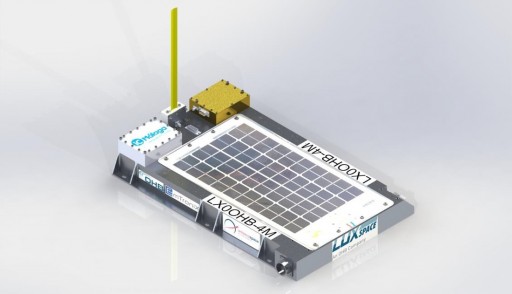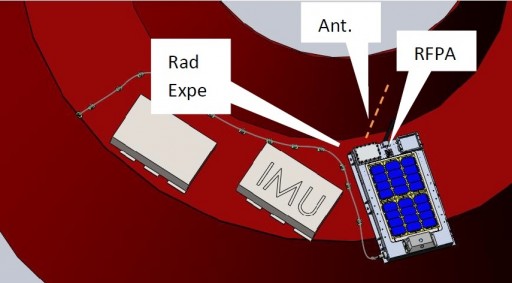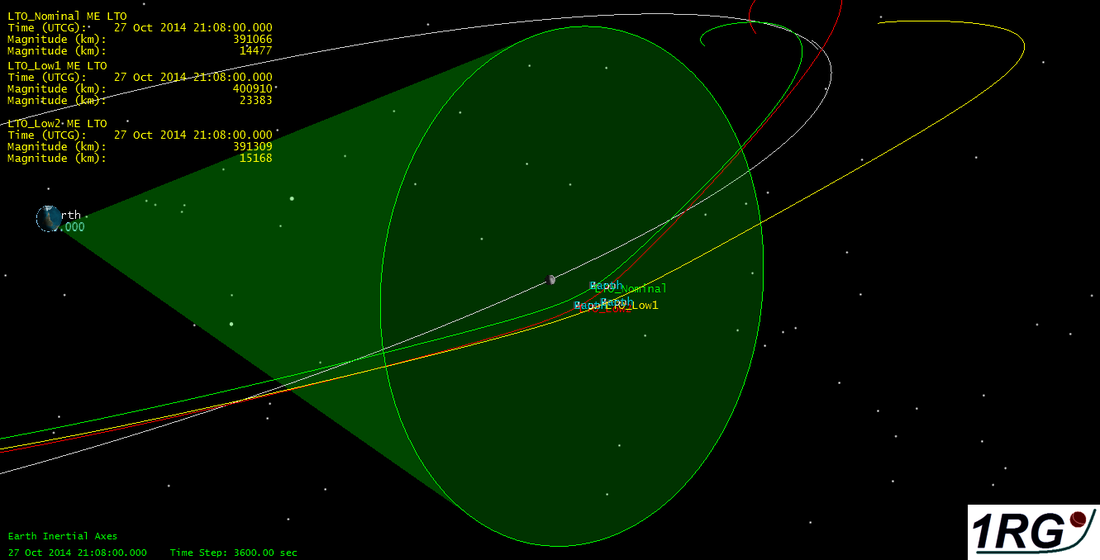4M Radio Experiment

Traveling around the Moon alongside Chang’e 5-T1 is the 4M Radio Experiment developed by LUX Space and installed on the third stage of the Long March 3C/E rocket. 4M stands for Manfred Memorial Moon Mission, named after the late Professor Manfred Fuchs, founder of the OHB Group of which LUX Space is a member.
The 4M payload is installed in the Vehicle Equipment Bay of the third Stage of the Long March rocket. It weighs about 14 Kilograms consisting of a primary power source, a secondary power generation system, an onboard computer, a communications payload with modulator, amplifier and antenna, and a radiation experiment to study the dose received on a trans-lunar trajectory.
The primary power source consists of 28 high-density battery cells (29-35Wh per cell) that can not be recharged to guarantee a minimum mission duration of 100 hours. The payload consumes 6 Watts of power that can also be generated by an array of triple-layer solar cells that charge four Li-Ion batteries which could allow the instrument to keep operating beyond the exhaustion of primary power. However, since the third stage will no longer be active and without attitude control, illumination of the cells will be a game of pure luck.
The FM430 onboard computer controls all instrument functions and generates the signals to be sent via the communications payload which operates in the amateur VHF band at 145.980MHZ (+/-2.9kHz) using an RF power of 1.5 Watts.


The system will operate a one-minute sequence that is repeated five consecutive times to increase the probability of reception due to uncertainties in third stage rotation. The one-minute sequence will include a 46.8-second segment during which the call sign and digital data is transmitted followed by several short segments that transmit battery voltage and temperatures. The JT65B sequence includes two clear-text messages “Hello World” and “Ni Hao Xinhua” plus different messages that were pre-programmed as well as RAD and CAM data along with basic instrument parameters.
A number of experiments will be run with 4M including basic ranging and radiation dose assessments. The RAD detector will sent accumulated dose measurements that are expected to reach 74 to 100kRad over the course of the mission experiencing a dose rate of 13 to 16 Rad/hour.
The ranging experiment will require at least four ground stations receiving the 4M signal simultaneously making use of the time-stamps on the reception of the call sign (LX0OHB-4M) by the four different stations which can then be used to determine the TODA, the Time Difference of Arrival of the callsign. Since amateur equipment is used, the measurement will rely on the accuracy of the PC clocks of the receiving stations which will lead to a position error of around 5000 Kilometers.
The overall goal of 4M is to engage the amateur radio community in a unique circumlunar mission, assess this type of communication for future application in space, study the radiation environment on the way to the Moon and demonstrate a very basic ranging method.
The 4M payload becomes active 77.8 minutes after launch and will continue sending data until exhausting its primary power supply. The availability of solar power will depend on the attitude of the stage and its rotation rate. Additionally, the final trajectory of the third stage after the lunar flyby will depend on its insertion accuracy. It is probable (90%) that the stage re-enters the atmosphere after its flight around the Moon, but it could also enter a highly elliptical orbit with an apogee near 400,000 Kilometers.

